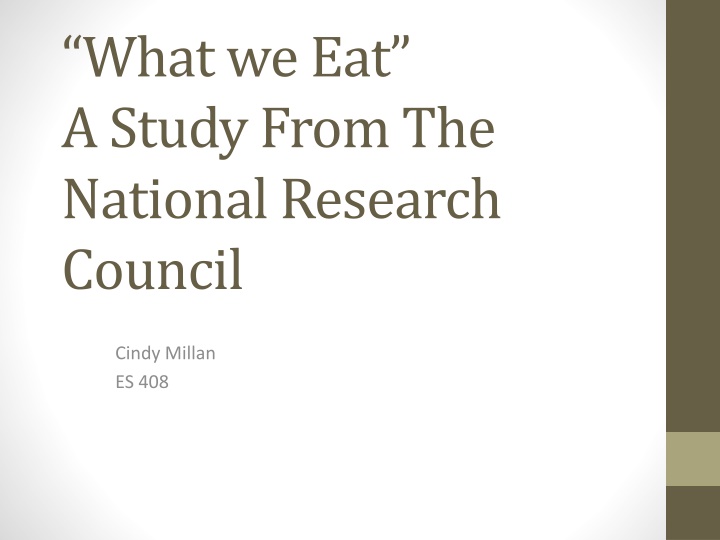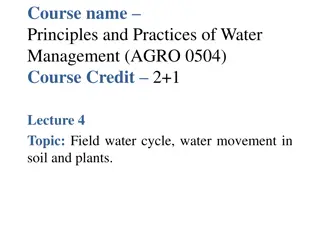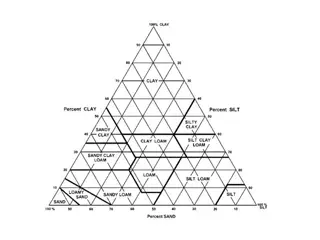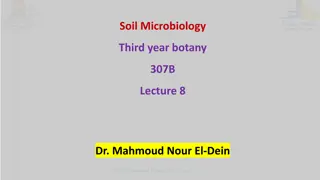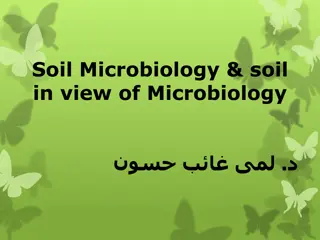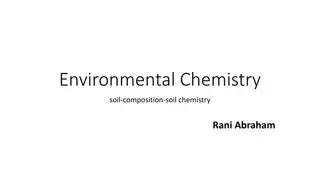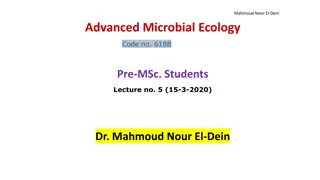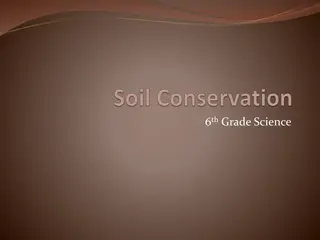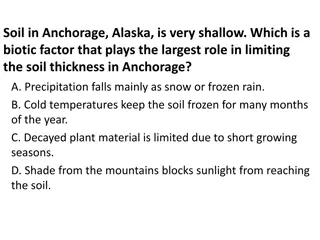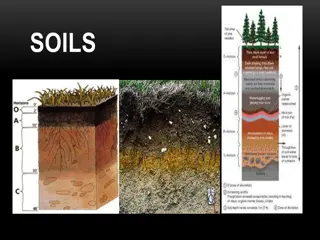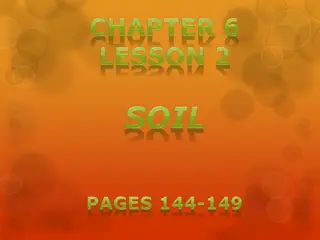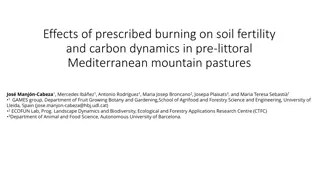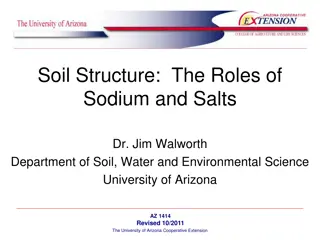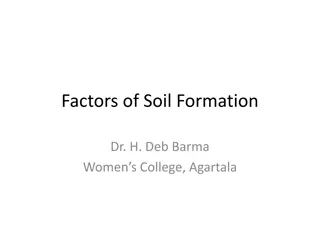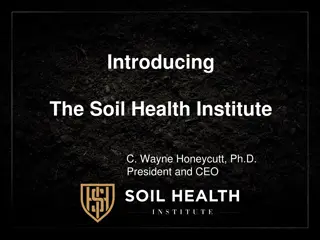Ingestion of Earth Soil: A Public Health Concern
Ingestion of soil by humans, either directly or indirectly, poses a public health issue. This study explores geophagia, its cultural significance, potential health risks, and the role of microbes in soil-borne pathogens affecting human health and agriculture.
Uploaded on Apr 04, 2025 | 0 Views
Download Presentation

Please find below an Image/Link to download the presentation.
The content on the website is provided AS IS for your information and personal use only. It may not be sold, licensed, or shared on other websites without obtaining consent from the author.If you encounter any issues during the download, it is possible that the publisher has removed the file from their server.
You are allowed to download the files provided on this website for personal or commercial use, subject to the condition that they are used lawfully. All files are the property of their respective owners.
The content on the website is provided AS IS for your information and personal use only. It may not be sold, licensed, or shared on other websites without obtaining consent from the author.
E N D
Presentation Transcript
What we Eat A Study From The National Research Council Cindy Millan ES 408
The Issue Ingestion of earth soil by humans is a public health issue. Ingestion of soils occurs in one of two way Direct: intentionally or consciously eating soils Indirect: via eating (Contaminated foods etc.)
Direct Ingestion (Geophagia) Geophagia/Geophagy: the direct consumption of soil or clay Documented in historical times Remains a current practice today Practice increasing in Western society's through introduction by several immigrant groups Soils can be purchased in ethnic food stores that attract specific cultures and spark interest for others
Direct Ingestion Cont. Human/Animal Nutritionist Perspective Acquired Habitual Response: Ingestion of soils in order to reduce toxicity of various environmental components Innate Response: As a response to nutritional deficiency
Direct Ingestion Cont. Problems associated with Geophagia Association with mental health disorder Balancing habitual response Increased exposure to toxins
Microbe Effects on Earth Material Surface soils provide a means for food production Plant nutrition is the result of balanced earth characteristics Free living microbes in rhizosphere Symbiotic associations between rhizobia and mycorhizal fungi Suppression of pathogens
Microbe Effects cont. Human health and Soil-Bourne pathogens Pathogenic organisms in soil can infect crops Antibiotic take up by plants affects human health too Adherence of pathogens to unwashed products most common
Microbe Effects cont. Helminthes (Worms) Roundworms* Flatworms Tapeworms Most commonly ingested in developing countries and in southeastern Further causing anemia, vitamin deficiency's & GI blocks
Trace Elements & Metals in Earth Material Toxic and beneficial trace elements present in soil Soil parent mineral Atmospheric deposition of natural materials (Ash) Anthropogenic inputs Trace element conc. in soil Varies pH 6-8 increases absorption of many minerals (Ag, Au, Cr and F) Increases conc. of other elements may not effect animal health
Trace Elements & Metals in Earth Material
Bioaccumulation of Trace Toxic Metals Cadmium Result from crops growing in soils high in cadmium content Occupational exposure Exposure through domestic items (Plastic, batteries and metal coating) Disease in humans occurs mainly through long term consumption of contaminated rice resulting in proximal tubular dysfunction Japan: Mining and smelting resulted in contamination of rice paddy soils *Individuals in this area were consuming 600mg/day
Bioaccumulation cont. Selenium A protective factor? Ecological studies have found an inverse correlation between selenium levels in soil and mortality from cancers (Specifically prostate) Study: Men taking selenium supplements for a period of 5 years= 65% reduction incidence of prostate cancer 9 year follow up found no correlation between base selenium levels and prostate cancer Most studies looked into relationship between selenium supplementation and cancer risk, none have focused on relationship between low- selenium bioavailability and cancer risk
Bioaccumulation cont. Zinc Found in red meat, poultry, grains, dairy, legumes Critical soil nutrient Zinc as a protective factor? There is evidence that zinc inhibits replication of prostate cancer cell growth Cancer cells (from prostate tumors) lose their ability to amass zinc Reduced red meat consumption and increased cereals in diet may attribute to zinc deficiency
Conclusion There is much research and collaboration opportunity! High priority research should focus on the following: 1. Determine the influence of biogeochemical cycling of trace elements in soil and its critical relationship to low dose chronic exposure through food and the influence on human health. 2. Determining distribution, survival and transfer of human and plant pathogens through soil 3. Improve public understanding of the relationship between disease and metal speciation (and that of disease and non- metal interaction)
References National Research Council, 2007, Chapter 5- What we Eat
